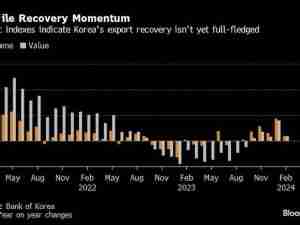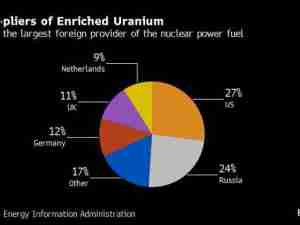Nothing could be more American than pecan pie at Thanksgiving — right? Well, not this year.
Thanks largely to the impact of Hurricane Michael, which smashed through Georgia’s pecan patch last year, domestic production is likely to have fallen to its lowest level in a decade in the year through September, according to U.S. Department of Agriculture data. Combined with a record volume of net imports, that’s likely to mean that about 41% of the nuts consumed in the U.S. this year came from overseas.

The majority of that total will be from Mexico, whose rapidly rising pecan production has been threatening to overtake its northern neighbor since 2016. With their lower wages, Mexicans (and Mexican-Americans) have been key to the laborious business of growing and shelling pecans for the American market for a century. The key ingredient in this latest boom, however, is China.
Hickory nuts are a popular treat in China, where they’re considered a delicacy of Alibaba Group Holding Ltd.’s hometown of Hangzhou. Pecans, which come from another type of hickory native to the southern U.S. and northern Mexico, make a decent substitute. As a result, China and Hong Kong have become the most important export end-market for American kernels in recent years, accounting for about a fifth of global consumption.
The trade war has devastated that fledgling business. As part of the tit-for-tat of tariffs with the Trump administration, Beijing has imposed a 47% levy on pecan imports from the U.S., making the American product prohibitively expensive when competing against the 7% imposed on Mexican nuts. Exports of American pecans to Hong Kong and China have fallen by about three-quarters, from 59.6 million pounds (27 million kilograms) in the year through September 2018 to 15.6 million pounds in the most recent 12 months. Those from Mexico to China, meanwhile, increased more than 3,000% in 2018.
That’s caused U.S. growers to miss out on one of the main reasons for growing fruit and tree nuts. Most orchard crops take years to grow to maturity (in the case of pecans, it’s five to 10). At a time of rising global demand, that can create supply-demand imbalances that are very attractive for producers, with supply deficits pushing up prices for years at a time. China’s differential tariffs appear to have wiped that out: While Mexican pecans have been attracting prices well in excess of $3 a pound, north of the border payments to growers slipped below $2 a pound this year.
The pecan wasn’t part of the original Pilgrim-Native American holiday feast. But by the time what’s now thought of as the standard Thanksgiving menu started coming together in the 19th century, the nut was well-established in the southeast and Texas. The basic pie that we know today surged in popularity in the 1920s thanks to a recipe appearing on the label of a popular brand of corn syrup. Over the past century, it went national and is now the well-established complement or alternative to the iconic pumpkin pie.
A Thanksgiving breakthrough in the trade tensions between Beijing and Washington would certainly help to rebalance things in favor of American farmers, but there’s a further issue looming.
Chinese horticulturalists haven’t failed to notice their compatriots’ taste for pecan, and have been busily planting orchards to meet the demand. To date, China’s pecan production has been approximately zero, but once those trees reach maturity, there’s going to be a new player on the global market.
Already, 47,000 hectares (116,000 acres) have been planted, mainly in southwestern Yunnan province and the hickory-growing region near the lower Yangtze River. That’s a larger area under pecan cultivation than America’s main producing states, Texas and Georgia, can boast. By the time American growers re-establish relationships in China damaged by the current trade war, Chinese import demand could already be on the wane.American holiday feasts won’t be short of pecans. But U.S. farmers are likely to have less to be thankful for in future.







